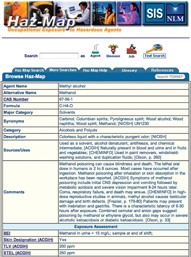Safety and Health Programs
We have devoted most of the chapter thus far to discussing physical hazards in the workplace and their impact on both workers and the organization. However, other hazards have major effects on workers, including stress, unsafe behaviors, and poor health habits. To cope with both physical and other types of hazards, companies often design comprehensive safety and health programs.
Safety Programs
A safe working environment does not just happen—it has to be created. The organizations with the best reputations for safety have developed well-planned, thorough safety programs. Concern for safety should begin at the highest level within the organization, and managers and supervisors at all levels should be charged with demonstrating safety awareness, held responsible for safety training, and rewarded for maintaining a safe workplace. Although support for safety has to start at the top, no one knows better than the employees about the job, its risks, and what could be improved. The input and participation of line workers is critical to an effective safety program.66
Companies with comprehensive safety programs are likely to be rewarded with fewer accidents, fewer workers’ compensation claims and lawsuits, and lower accident-related costs. Keep in mind that OSHA considers employee involvement a key feature of a successful safety program. Organizations often involve employees by establishing a safety committee. Although the specific details may vary, the overall purpose of a safety committee is to have employees and managers collaborate to promote workplace safety and health.67 Safety committees typically evaluate the adequacy of safety procedures; monitor findings and trends; review accidents, illnesses, and safety suggestions; and recommend and evaluate hazard solutions. However, experts recommend that safety committees do not enforce the policies, or they risk being viewed as the “safety police.” Instead, the committees should make recommendations that management should implement and enforce.

FIGURE 16.5
Example Haz-Map Web Page
The creation of safety action teams at Alberto Culver provides an example of the potential that can be realized by including employees in the safety-improvement process.68 Alberto Culver used safety committees but rarely consulted with employees closest to the work situation—forklift drivers, shipping clerks, and packers. That all changed when the company initiated its first safety action team in 1999. The team collaborated with frontline workers with the purpose of leveraging their knowledge to improve workplace safety. This first team operated in one plant, and within one year the recordable injury rate at the plant dropped by 44 percent and lost time decreased by 70 percent. The results were undeniable, and the safety action team at Alberto Culver (now Unilever) was expanded to 46 global improvement teams involving 425 employees.
Employee Assistance Programs (EAPs)
As we saw in Chapter 13, e mployee assistance programs (EAPs) are programs designed to help employees whose job performance is suffering because of physical, mental, or emotional problems. EAPs address a variety of employee problems ranging from drug abuse to marital problems. Recent surveys indicate that EAPs are offered by most companies, but many workers, approximately 20 percent, do not know their companies offer them.69 EAPs have the potential to provide effective assistance, but only if employers make their availability known to workers.
Many organizations create EAPs because they recognize their ethical and legal obligations to protect not only their workers’ physical health but their mental health as well. The ethical obligation stems from the fact that the causes of organizational stress—climate, change, rules, work pace, management style, work group characteristics, and so forth—are also frequently the causes of behavioral, psychological, and physiological problems for employees.70 Ethical obligation becomes legal obligation when employees sue the company or file workers’ compensation claims for stress-related illnesses. In fact, much of the heightened concern about dealing with the consequences of workplace stress stems from the increasing incidence and severity of stress-related workers’ compensation claims and their associated costs.71
Stress often results in burnout , a syndrome characterized by emotional exhaustion, depersonalization, and reduced personal accomplishment.72 People who experience burnout may dread returning to work for another day, treat coworkers and clients callously, withdraw from the organization, and feel less competent in their jobs. Some of the factors that may lead to burnout include ambiguity and conflict when dealing with various job-related issues and problems.73 A lack of social support can aggravate these effects.
Burnout can lead to serious negative consequences for the individual and for the organization and can have a negative impact on mental and physical health.74 Mental health problems resulting from burnout can include depression, irritability, lowered self-esteem, and anxiety. Physical problems can include fatigue, headaches, insomnia, gastrointestinal disturbances, and chest pains. Organizational outcomes associated with burnout include turnover, absenteeism, and a decrease in job performance.75 In addition, sometimes burnout leads to increased drug and alcohol use.76
Depression is another topic that merits consideration in any discussion of EAP issues. Clinical depression is a serious mental illness and a bigger problem in the workplace than many people realize. Dr. Ronald Kessler, a health care policy professor at Harvard Medical School, states that depressed workers report “having problems with time and motion, lifting things, and having accidents on the job.”77 Research is consistent with this observation and suggests that depressed workers may be more prone to accidents due to lack of concentration, fatigue, memory difficulties, and slower reaction time. In addition to possible accident-proneness, depression has been linked to decreased productivity. Depression can be treated with counseling and medication, but you should leave this treatment to professionals by referral to your EAP or other source for help.
A manager should refer an employee to an EAP solely on the basis of a performance problem and for no other reason. The case of a manager at a Lucky Stores grocery store illustrates this point.78 The manager had been a star performer, but employees started complaining about his abusive and hostile manner. Company representatives asked whether he was having “problems” and offered him assistance. He denied having problems, and a transfer to another store did not improve the situation. He was then offered a leave of absence if he contacted the company’s EAP. The EAP staff determined he was suffering from stress and diagnosed a mental illness. He was fired after six months of leave.
The store manager brought suit against the company and the court found that although he was not disabled, the company may have perceived him to be disabled. Therefore, the former manager may have had a claim under the ADA. The company and former manager reached an out-of-court settlement. The message of this and some similar cases is that referral to an EAP should be based on work-related performance issues, rather than on inferences or conclusions about the worker’s mental or emotional well-being.
Wellness Programs
Whereas EAPs focus on treating troubled employees, wellness programs focus on preventing health problems. Wellness programs have become a popular employee benefit in the United States, with one survey finding that 64 percent of employers offered a wellness program.79 Wellness programs are also growing in popularity outside of the United States, with approximately 40 percent of employers in Europe, Asia, and Africa now offering this benefit.80
A complete wellness program has three components:
-
It helps employees identify potential health risks through screening and testing.
-
It educates employees about health risks such as high blood pressure, smoking, poor diet, and stress.
-
It encourages employees to change their lifestyles through exercise, good nutrition, and health monitoring.
Wellness programs may be as simple and inexpensive as providing information about stop-smoking clinics and weight-loss programs or as comprehensive and expensive as providing professional health screening and multimillion-dollar fitness facilities. Companies are beginning to find that social media is a cost effective means for implementing a wellness program. The Manager’s Notebook, “A Social Approach to Wellness,” describes recent wellness programs that utilize social media.

Source:© Scott Griessel/Fotolia.
MANAGER’S NOTEBOOK A Social Approach to Wellness
Technology/Social Media
Social media is being integrated into wellness programs, ranging from its use as a marketing tool to a platform for delivering the program.
-
▪ Social media as a marketing tool VCU Medical Center in Richmond, Virginia, used a Facebook campaign to help market its mammography campaign to its female employees. The medical center found the approach to be very cost effective and was very pleased to see a 40% increase in mammograms following its program.
-
▪ Social media as a delivery platform Sprint and Blue Shield of California provide examples of wellness programs that utilized a social networking platform. For its first wellness program on a national scale, Sprint partnered with ShapeUp, a wellness software company, to offer the program. Sprint challenged its U.S. employees to a 12-week “Get Fit” program in which employees could form teams, log their progress online, and challenge each other. Approximately 16,000 of the company’s 40,000 employees registered for the program. Only about 45% of those who registered completed the full 12 weeks, but Sprint is positive about the results. During those 12 weeks, Sprint employees lost over 40,000 pounds of weight and logged over 4 billion steps.
Similar to the Sprint approach, Blue Shield of California offered its employees an eight-week fitness challenge via social media. Approximately 1,300 employees walked more than 400 million steps (the equivalent of 200,000 miles).
-
▪ Other social media–based wellness tools There are an increasing number of social media–based wellness tools. In addition to ShapeUp, other companies that offer wellness software include Keas and Limeade. Not all of the social media platforms offer the same features or prices, so it is worth shopping around.
The Rewards of Good Health Habits
Wellness programs, if implemented effectively, can make a positive contribution to the bottom line in an organization. Although there are costs to starting and maintaining a wellness program, the return in terms of reduced health care costs and absenteeism can greatly offset the investment. A recent study tracked the return on investment for a wellness program at a Midwest utility company.81 Although the study focused on only one organization, it included over 2,000 employees and looked at the effectiveness of the wellness program over a nine-year period. The findings support wellness programs as a good investment. The overall return on investment was 157 percent, with financial savings from reduced health care costs and less time away from work well exceeding the cost of the wellness program.
These kinds of results indicate that wellness efforts can pay off in tangible ways. In addition, although it may be difficult to measure, people claim that they work better when they feel better and can often better solve problems and be more productive after an exercise break.
